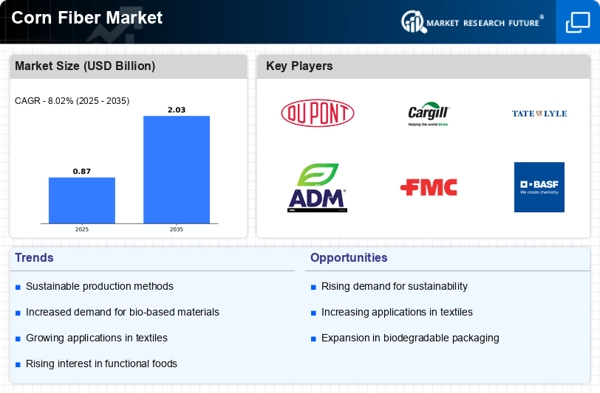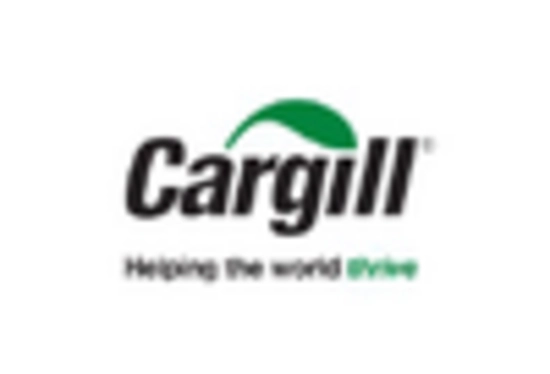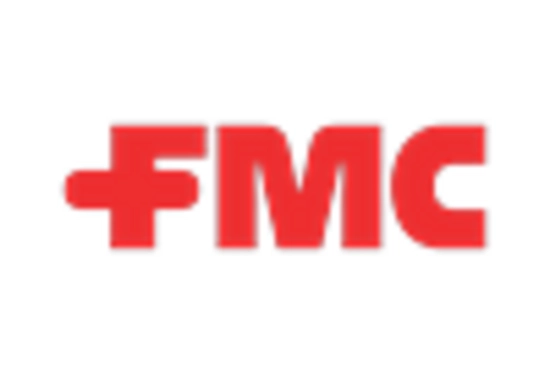Rising Demand in Textiles
The textile industry is increasingly recognizing the benefits of corn fiber, which may serve as a significant driver for the Corn Fiber Market. With a growing consumer preference for natural and sustainable fibers, corn fiber is being adopted in various textile applications, including apparel and home furnishings. Market data suggests that the demand for sustainable textiles is on the rise, with projections indicating a compound annual growth rate that could exceed 10% over the next few years. This trend is likely to propel the Corn Fiber Market forward, as manufacturers seek to incorporate eco-friendly materials into their product lines, thereby meeting consumer expectations and regulatory standards.
Technological Innovations
Technological advancements in the processing and production of corn fiber are likely to enhance the efficiency and quality of the Corn Fiber Market. Innovations such as improved extraction methods and the development of new applications for corn fiber are emerging. For instance, advancements in enzymatic processes may lead to higher yields and lower production costs, making corn fiber more competitive against traditional fibers. Furthermore, the integration of biotechnology in fiber production could open new avenues for the industry, potentially expanding its market reach. As these technologies evolve, they may contribute to a more robust and dynamic Corn Fiber Market, attracting investments and fostering growth.
Sustainability Initiatives
The increasing emphasis on sustainability appears to be a pivotal driver for the Corn Fiber Market. As consumers and manufacturers alike prioritize eco-friendly products, the demand for corn fiber, which is biodegradable and derived from renewable resources, is likely to rise. This shift towards sustainable materials is reflected in various sectors, including textiles and packaging, where corn fiber is being utilized as a substitute for synthetic fibers. Reports indicate that the market for biodegradable materials is projected to grow significantly, potentially reaching a valuation of several billion dollars in the coming years. Consequently, the Corn Fiber Market stands to benefit from this trend, as companies seek to align their products with consumer preferences for environmentally responsible options.
Health and Nutrition Trends
The health and nutrition sector is increasingly turning to corn fiber due to its beneficial properties, which may drive growth in the Corn Fiber Market. Corn fiber is recognized for its high dietary fiber content, which can aid in digestive health and weight management. As consumers become more health-conscious, the demand for functional ingredients in food products is likely to increase. Market Research Future indicates that the functional food and beverage sector is expanding, with a growing emphasis on ingredients that promote health. This trend could lead to a greater incorporation of corn fiber in various food applications, thereby enhancing the visibility and appeal of the Corn Fiber Market.
Regulatory Support for Biodegradable Materials
Regulatory frameworks promoting the use of biodegradable materials are likely to bolster the Corn Fiber Market. Governments and organizations are increasingly implementing policies aimed at reducing plastic waste and encouraging the adoption of sustainable alternatives. These regulations may create a favorable environment for corn fiber, which is recognized for its environmental benefits. As legislation evolves, companies in the Corn Fiber Market may find new opportunities for growth and innovation. The potential for subsidies or incentives for using biodegradable materials could further stimulate demand, positioning corn fiber as a viable solution in various applications, from packaging to consumer goods.


















Leave a Comment